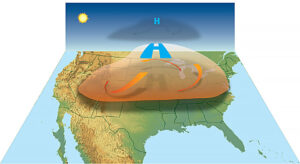Herd immunity is a concept in epidemiology that describes how people can collectively be protected from infection if a specified amount of the population has immunity to a disease, which provides indirect protection to those who are not immune to the disease. Keeping a community free from viral disease rests in part on the success of herd immunity.
Herd immunity is achieved in one of two ways: A sufficient number of people become infected, or through vaccination of a high percentage of the population.
To illustrate the concept, think of people attending church. The man in the first pew has contracted the flu. He passes it on to the women sitting next to him. If the woman next to him is not immune, the disease will spread to everyone in the church. However, if the woman has immunity, the virus will stop there, assuming that the man had no contact with anyone else. Therefore, her immunity protected everybody in the church, even if they didn’t get a flu shot that year. This is meant only to explain the principle of herd immunity, real-life scenarios of the spread of contagion are more complex.
The success of the polio vaccine demonstrated the benefits of using immunization to protect a population, and herd immunity can be achieved for a wide variety of contagious illnesses. While the term herd immunity seems to imply that the whole herd should be vaccinated, the whole herd is merely protected, if a certain percentage is immunized.
Mathematical models can be used to determine exactly what percentage of the population needs to be vaccinated to prevent communicable diseases. According to the Oxford Vaccine Group, if approximately 80 to 85 percent of a population is vaccinated against polio, then herd immunity is achieved. But a disease such as measles is more contagious than polio, so 90 to 95 percent of a population needs to be vaccinated for herd immunity to be achieved.
There has much talk about herd immunity as a way to stop the spread of COVID-19. But consider how the term “Herd Immunity” originated. “Herd immunity” emerged from veterinary epidemiology, involving economic reasons of whether or not animals die for the overall health of a herd.
We should be extremely cautious when applying the concept of herd immunity to humans when dealing with a deadly disease like COVID-19. It is an equation that does not factor in the death and suffering of human lives. A newly-released study conducted by researchers at Harvard Medical School and Emory University School of Medicine shows that COVID-19 is killing 20 times more people per week than the flu.
Based on early estimates of this virus’s infectiousness, we will likely need at least 70% of the population to be immune to have herd protection. Despite more than 4 million confirmed COVID-19 cases worldwide, no country is even approaching the levels of immunity needed to collectively slow transmissions.
In China and Spain, test results for antibodies found that out of thousands of people tested, the percentage of people with antibodies for the disease was in single digits. Even in hard-hit regions, such as New York City, preliminary testing of 1,300 people found that 21.2 percent were positive for antibodies.
Dr. Robert Atmar, an infectious disease specialist at Baylor College of Medicine in Houston said that the numbers indicate that 80 percent of the world’s population is still susceptible. Another concern is that we do not know how long or what level of immunity is conferred by the presence of antibodies.
What all these means is, without a vaccine, preventive protocols must be in place to avoid health care systems being overwhelmed and a large increase in the number of deaths. Dr. David Dowdy, an associate professor of infectious disease epidemiology at the Johns Hopkins Bloomberg School of Public Health says this raises serious concerns about easing lockdowns.










